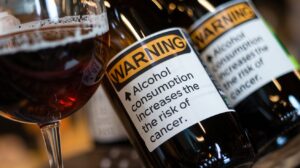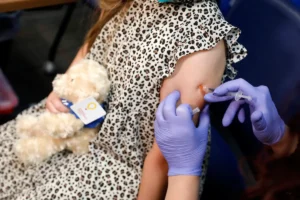The measles outbreak confirmed in Upstate South Carolina intensified this week, raising alarm among health officials and residents alike.
The Current Situation
Health authorities in South Carolina have confirmed a full-blown measles outbreak concentrated in the Upstate region, with eight verified cases as of October 1, 2025. Five of these cases surfaced in just the past month, indicating a recent surge in transmission.
To qualify as an outbreak, at least three epidemiologically linked cases must be identified—and health officials assert that all of the infected individuals were unvaccinated and lacked natural immunity from prior infection. Some cases have no clear origin, suggesting unrecognized community spread.
Officials have isolated the confirmed patients and launched a contact tracing investigation to identify further possible exposures. The disease is circulating at a time when measles is resurging across the U.S. — over 1,500 confirmed cases have been tallied nationwide so far in 2025.
What’s Driving the Spread?
A few interlocking factors appear to be fueling the outbreak in South Carolina and nationwide:
- Gaps in vaccination coverage. All confirmed cases in South Carolina involved individuals without measles immunity—either because they never received the MMR vaccine or had inadequate protection.
- Community transmission is emerging. Two of the eight cases cannot be traced to travel or contact with known cases, indicating hidden chains of spread.
- National resurgence. The U.S. has seen more than 40 measles outbreaks in 2025, largely among underimmunized communities.
- Local clustering. In some instances, the outbreak in South Carolina is tied to a school setting, raising concerns about transmission among children.
The measles virus is highly contagious: an infected person can spread it to 8 to 20 susceptible individuals. That’s why missing even a few vaccination doses can allow outbreaks to reignite in vulnerable communities.
Recognizing Measles: Symptoms & Risks
Measles typically begins with flu-like symptoms:
- High fever
- Persistent cough
- Runny nose
- Red, watery eyes
Within a few days, the hallmark red rash appears—usually starting on the face before spreading downward. This rash often lasts five to six days.
While many people recover without severe complications, measles can lead to serious outcomes—especially in children, pregnant women, and immunocompromised individuals. These complications may include pneumonia, encephalitis, and severe dehydration.
Because the virus can be transmitted by airborne droplets and linger in a room for up to 30 minutes after an infected person has left, isolation of suspected cases and timely vaccination are crucial.
Broader Context: Measles on the Rise
South Carolina’s outbreak is part of a troubling national trend. In 2025, measles infections have surged across multiple states, with more than 1,500 confirmed cases so far. For context:
- In Georgia and South Carolina combined, 14 cases have been confirmed this year, many linked to clusters with low vaccination coverage.
- Earlier in the year, South Carolina recorded isolated cases—some tied to international travel—with three cases confirmed by September before the recent escalation.
- The 2025 U.S. measles resurgence is among the worst in decades, partly attributed to declining vaccination rates and vaccine hesitancy.
Given measles’s history of elimination in the U.S. (declared eliminated in 2000), its comeback signals deeper cracks in community immunity.
Preventive Actions & What Authorities Are Doing
Health leaders are emphasizing several key strategies to contain the outbreak:
- Vaccination campaigns. The MMR (measles-mumps-rubella) vaccine remains the cornerstone defense. Two doses provide about 97% protection.
- Reviewing immunization records. Residents are urged to confirm they and their children are up to date on shots.
- Quarantine and isolation. Confirmed patients have been isolated, and exposed individuals are being monitored or quarantined to stop further spread.
- Contact tracing. Officials are actively tracing all possible exposure chains to identify new cases early. DPH
- Public communication. Health departments are issuing alerts, public statements, and urging caution—especially among vulnerable populations.
Public health leaders warn that more measles cases are expected as the outbreak develops, especially in underimmunized pockets.
What You Can Do to Stay Safe
If you are located near the affected regions or plan to travel, consider these precautions:
- Verify vaccination status. Ensure you and your family have received two doses of MMR, unless contraindicated.
- Get vaccinated promptly after exposure. The vaccine can still offer protection within 72 hours for close contacts. WYFF
- Isolate if symptomatic. If you develop a fever, cough, or rash, stay home and call your healthcare provider before visiting a clinic.
- Avoid crowded indoor spaces. Measles spreads fast in poorly ventilated settings.
- Support public messaging. Encourage accurate vaccine information and help counter misinformation in your circles.
Looking Ahead
This recent outbreak in South Carolina is a stark reminder that measles remains a threat—even in nations where it was once virtually eliminated. The combination of vaccine gaps, community spread, and rising national case counts demands urgency from both officials and individuals alike.
By prioritizing vaccination, prompt outbreak response, and robust public education, the spread can be stemmed—and further outbreaks prevented.
Subscribe to trusted news sites like USnewsSphere.com for continuous updates.





